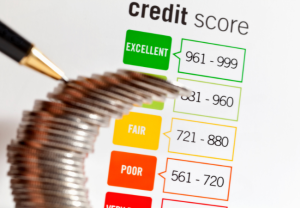Protecting your credit score and preventing identity theft is of paramount importance in today’s digital age. One powerful tool at your disposal is a credit freeze, also known as a security freeze. By freezing your credit, you can restrict access to your credit reports, making it incredibly difficult for fraudsters to open new accounts in your name. Best of all, freezing your credit is free of charge and will not harm your credit rating.
Key Takeaways
- A credit freeze is an effective way to protect your credit score and prevent identity theft.
- It restricts access to your credit reports, making it difficult for fraudsters to open new accounts.
- Freezing your credit is free of charge and will not harm your credit rating.
- Consider freezing your credit to enhance your financial security.
- Remember to lift the freeze when you need to apply for credit or loans.
How to Unfreeze Your Credit and Manage Frozen Credit Effectively
There may be instances where you need to unfreeze your credit temporarily. If you want to apply for new credit, such as a car loan or mortgage, you will need to lift the freeze at the credit bureaus where it is placed.
You have multiple options for unfreezing your credit:
- Online: Many credit bureaus provide online portals for unfreezing your credit. Simply log in to your account and follow the instructions to unfreeze your credit. This is typically the most convenient and fastest option.
- Phone: You can also unfreeze your credit by phone. Contact the credit bureau’s dedicated hotline and provide the necessary information to lift the freeze.
- Mail: If you prefer to unfreeze your credit by mail, you can send a written request to the credit bureau. Be sure to include your full name, address, social security number, and any other required documentation. Keep in mind that this method may take longer, as it relies on traditional mail delivery.
The time it takes to unfreeze your credit varies depending on the method you choose. Online or phone requests are typically processed within hours or one business day, offering a quick solution when you need immediate access to your credit. On the other hand, if you opt for the mail option, unfreezing your credit may take up to three business days.
It’s important to plan ahead and allow sufficient time for the credit thaw process, especially if you have upcoming credit applications. Remember, once your credit is unfrozen, it remains susceptible to potential fraud, so it’s crucial to monitor your credit reports regularly for any suspicious activity.
Reasons for Unfreezing Your Credit
There are several reasons why you might consider unfreezing your credit:
- Applying for a new credit card
- Requesting a loan for a major purchase, such as a car or home
- Seeking new employment that requires a background check
- Signing up for a new utility service
By understanding the process and reasons for unfreezing your credit, you can effectively manage your frozen credit and navigate the temporary lift with confidence.
Credit Freeze vs. Credit Lock: What You Need to Know
Understanding the difference between a credit freeze and a credit lock is crucial when it comes to protecting your credit reports. While both options restrict access to your credit information, there are significant differences that you should be aware of.
A credit freeze is mandated by federal law and is provided free of charge. It offers strong legal protections by blocking access to your credit reports unless certain exceptions apply. This means that even if a fraudster has your personal information, they won’t be able to open new accounts in your name without your consent. It’s an effective measure to prevent identity theft and safeguard your credit.
On the other hand, a credit lock is a product offered voluntarily by credit bureaus like Equifax, TransUnion, and Experian. While a credit lock provides similar functionality to a credit freeze by restricting access to your credit reports, it may come with fees. Unlike a credit freeze, a credit lock may not have the same level of legal protections, as it is not mandated by federal law.
It’s important to note that both credit freezes and credit locks give you control over who can access your credit reports, providing an additional layer of security. However, understanding the differences and legal protections associated with each option can help you make an informed choice to safeguard your credit information.



